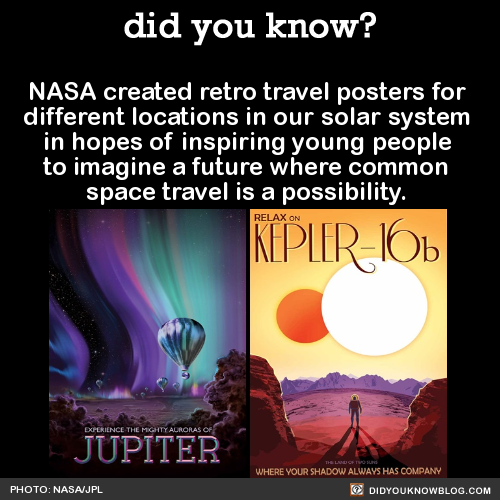How Do You Stay Fit On A Mission To Mars?
How Do You Stay Fit on a Mission to Mars?
This mini exercise device could be the key!
Onboard the International Space Station, astronauts need to work out to maintain their bone density and muscle mass, usually exercising 2 hours every single day. Throughout the week, they exercise on three different pieces of equipment–a bike, a treadmill and the Advanced Restive Exercise Device (ARED).

All these devices are needed to keep an astronaut healthy.
However, deep-space vehicles like our Orion Spacecraft aren’t as roomy as station, so everything — including exercise equipment — needs to be downsized. The Miniature Exercise Device (MED-2) is getting us one step closer to being able to keep astronauts’ bodies healthy on long journeys to the moon, Mars and beyond.

MED-2 is a compact, all-in-one exercise device that we developed and will be launching to the space station Tuesday, March 22. Onboard the station, we’ll see how MED-2 will perform in microgravity and how it will need to be further adapted for our Journey to Mars. However, it’s already pretty well equipped for deep space missions.
So what makes MED-2 so great for deep space travel and our Journey to Mars?
1. It is an all-in-one exercise device, meaning it can do both aerobic and resistive workouts. When we go to Mars, the less equipment we need, the better.

2. It’s incredibly light. The MED-2 weighs only 65 pounds, and every pound counts during space missions.

3. It has 5 - 350 pounds of resistance, despite weighing only 65 pounds. Astronauts don’t all lift the same amount, making the flexibility in MED-2’s “weights” essential.

4. It’s tiny. (Hence its name Miniature Exercise Device.) Not only is MED-2 incredibly light, but it also won’t take up a lot of space on any craft.

5. It powers itself. During an aerobic workout, the device charges, and then that power is used to run the resistive exercises. When traveling to space, it’s good when nothing goes to waste, and now astronauts’ workouts will help power the Journey to Mars.

MED-2 is only one of many devices and experiments flying on Orbital ATK’s Cygnus spacecraft. To find out more about the science on the space station, follow @ISS_Research and @Space_Station on Twitter.
Make sure to follow us on Tumblr for your regular dose of space: http://nasa.tumblr.com
More Posts from Maevetheeuropan and Others
omfg I wanna buy this as a poster


Do not go gentle into that good night. Rage, rage against the dying of the light.

NASA scientists have reported that they’ve successfully tested an engine called the electromagnetic propulsion drive, or the EM Drive, in a vacuum that replicates space. The EM Drive experimental system could take humans to Mars in just 70 days without the need for rocket fuel, and it’s no exaggeration to say that this could change everything.
But before we get too excited (who are we kidding, we’re already freaking out), it’s important to note that these results haven’t been replicated or verified by peer review, so there’s a chance there’s been some kind of error. But so far, despite a thorough attempt to poke holes in the results, the engine seems to hold up.
Continue Reading.
Space Station Research: Air and Space Science
Each month, we highlight a different research topic on the International Space Station. In June, our focus is Air and Space Science.

How is the space station being used to study space? Studies in fundamental physics address space, time, energy and the building blocks of matter. Recent astronomical observation and cosmological models strongly suggest that dark matter and dark energy, which are entities not directly observed and completely understood, dominate these interactions at the largest scales.

The space station provides a modern and well-equipped orbiting laboratory for a set of fundamental physics experiments with regimes and precision not achievable on the ground.
For example, the CALorimetric Electron Telescope (CALET) is an astrophysics mission that searches for signatures of dark matter (pictured above). It can observe discrete sources of high energy particle acceleration in our local region of the galaxy.
How is the space station contributing to aeronautics? It provides a long-duration spaceflight environment for conducting microgravity physical science research. This environment greatly reduces buoyancy-driven convection and sedimentation in fluids. By eliminating gravity, space station allows scientists to advance our knowledge in fluid physics and materials science that could lead to better designated air and space engines; stronger, lighter alloys; and combustion processes that can lead to more energy-efficient systems.

How is the space station used to study air? The Cloud-Aerosol Transport System (CATS) is a laster remote-sensing instrument, or lidar, that measures clouds and tiny aerosol particles in the atmosphere such as pollution, mineral dust and smoke. These atmospheric components play a critical part in understanding how human activities such as fossil fuel burning contribute to climate change.

The ISS-RapidScat is an instrument that monitors winds for climate research, weather predictions and hurricane monitoring from the International Space Station.

For more information on space station research, follow @ISS_Research on Twitter!
Make sure to follow us on Tumblr for your regular dose of space: http://nasa.tumblr.com

Even after dozens of spacecraft have been sent to Mars, much remains unknown about that world. Here we have 7 fascinating yet unanswered questions about Mars.
Okay now that I’m starting to get my ass in gear for astrophotography, I’d love it if some of y’all sated my need for attention and followed my instagram! I will return the favor of course
It’s mostly just space pictures, dogs, me, hiking stuff and lab stuff



Two very alarming changes have already been made on the White House website. Reason, empathy and progress must be fought for. I hope this isn’t indicative of upcoming policies but fear it obviously is.
Also I just edited this post to add my own screenshot: the White House’s website for combating antibiotic resistant bacteria is gone too.
I want to note that most of the great steps of social progress in American history were *not* made by presidents or politicians acting of their own accord. America thrives in a state of constant *peaceful* revolt. Protest, political dissent and civil disobedience are what change things.
Voting is great and we need more to do it, but the women’s suffrage movement didn’t get voted into victory. Republican President Nixon (Nixon!) didn’t create the Environmental Protection Agency because he had an environmentalist’s stance on the Earth.
It’s important to always remember that when people wield their concerns and press power to answer for itself, they change the world.
(Images courtesy of screenshots from a friend and from myself)
this website pisses me off, everyones always like “space is so cool!” not its not, space is bullshit and i hate everything about it, i genuinely just saw the phrase “a black hole with a mass two billion times the mass of the sun” im so pissed off, shut the fuck up, dont patronise me scientists you know i dont know what the fuck that means, my sad little brain cant comprehend the mass of one sun let alone two fucking billion, i cant even count past 10 without getting confused and youre out here talking about the mass of two billion fucking suns, shut the hell up. and dont even get me started about black holes or the expansion of the universe because thats another two seperate rants entierly. oh and apparently theres a planet made of ice except the ice is also on fire??? yeah sure fucking thing, scientists. and this is just the shit i know about. i purposely dont research space because it pisses me off so much, god knows what other fucking bullshit exists out there that ive yet to read a fucking wikipedia article about. i dont think space is real, literally everything about space is so fucking fake, this is just some elaborate fucking practicle joke. two billion times the mass of the sun, fuck you

When Japan began to rebuild after the 2011 earthquake and tsunami, artist Manabu Ikeda started a massive pen & ink piece. He worked 10 hours a day, 6 days a week, for 3.5 years before finishing ‘Rebirth’, a 13x10 foot drawing of a tree rising from chaos and ruin. Source Source 2

-
 redbackliftwear liked this · 5 years ago
redbackliftwear liked this · 5 years ago -
 bookbirdgetstheworm reblogged this · 8 years ago
bookbirdgetstheworm reblogged this · 8 years ago -
 yourbesttrashcan liked this · 8 years ago
yourbesttrashcan liked this · 8 years ago -
 isle-of-clouds liked this · 8 years ago
isle-of-clouds liked this · 8 years ago -
 falldowndead liked this · 8 years ago
falldowndead liked this · 8 years ago -
 terminatedapathy reblogged this · 8 years ago
terminatedapathy reblogged this · 8 years ago -
 tinycapa liked this · 8 years ago
tinycapa liked this · 8 years ago -
 lostlightsperceptor reblogged this · 8 years ago
lostlightsperceptor reblogged this · 8 years ago -
 deepspacepirate reblogged this · 8 years ago
deepspacepirate reblogged this · 8 years ago -
 deepspacepirate liked this · 8 years ago
deepspacepirate liked this · 8 years ago -
 maevetheeuropan reblogged this · 8 years ago
maevetheeuropan reblogged this · 8 years ago -
 teftissexy reblogged this · 8 years ago
teftissexy reblogged this · 8 years ago -
 teftissexy liked this · 8 years ago
teftissexy liked this · 8 years ago -
 discoverysciencecentre reblogged this · 8 years ago
discoverysciencecentre reblogged this · 8 years ago -
 blueclassydreamer liked this · 8 years ago
blueclassydreamer liked this · 8 years ago -
 photonic-pulsar reblogged this · 8 years ago
photonic-pulsar reblogged this · 8 years ago -
 photonic-pulsar liked this · 8 years ago
photonic-pulsar liked this · 8 years ago -
 abaven liked this · 8 years ago
abaven liked this · 8 years ago -
 bluetheelf liked this · 8 years ago
bluetheelf liked this · 8 years ago -
 davinken reblogged this · 8 years ago
davinken reblogged this · 8 years ago -
 cirislosttales-blog liked this · 8 years ago
cirislosttales-blog liked this · 8 years ago -
 latent-semantics reblogged this · 8 years ago
latent-semantics reblogged this · 8 years ago -
 check-out-my-plumbob reblogged this · 8 years ago
check-out-my-plumbob reblogged this · 8 years ago -
 seemeintokyo liked this · 9 years ago
seemeintokyo liked this · 9 years ago -
 hybridefiant-archive reblogged this · 9 years ago
hybridefiant-archive reblogged this · 9 years ago -
 torrilin reblogged this · 9 years ago
torrilin reblogged this · 9 years ago -
 queenvarda liked this · 9 years ago
queenvarda liked this · 9 years ago -
 abridragon liked this · 9 years ago
abridragon liked this · 9 years ago -
 maevemauvaise reblogged this · 9 years ago
maevemauvaise reblogged this · 9 years ago -
 thecolorsinyourhand liked this · 9 years ago
thecolorsinyourhand liked this · 9 years ago -
 malastabila liked this · 9 years ago
malastabila liked this · 9 years ago -
 rubinaambrosina liked this · 9 years ago
rubinaambrosina liked this · 9 years ago -
 paulabittencourtlima-blog liked this · 9 years ago
paulabittencourtlima-blog liked this · 9 years ago -
 treacherousgods liked this · 9 years ago
treacherousgods liked this · 9 years ago -
 nimthecat reblogged this · 9 years ago
nimthecat reblogged this · 9 years ago -
 nimthecat liked this · 9 years ago
nimthecat liked this · 9 years ago -
 arielfabulous liked this · 9 years ago
arielfabulous liked this · 9 years ago -
 jenniferrpovey reblogged this · 9 years ago
jenniferrpovey reblogged this · 9 years ago -
 lachiejameskc1 liked this · 9 years ago
lachiejameskc1 liked this · 9 years ago -
 lyndonnobles reblogged this · 9 years ago
lyndonnobles reblogged this · 9 years ago

